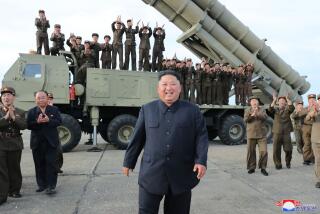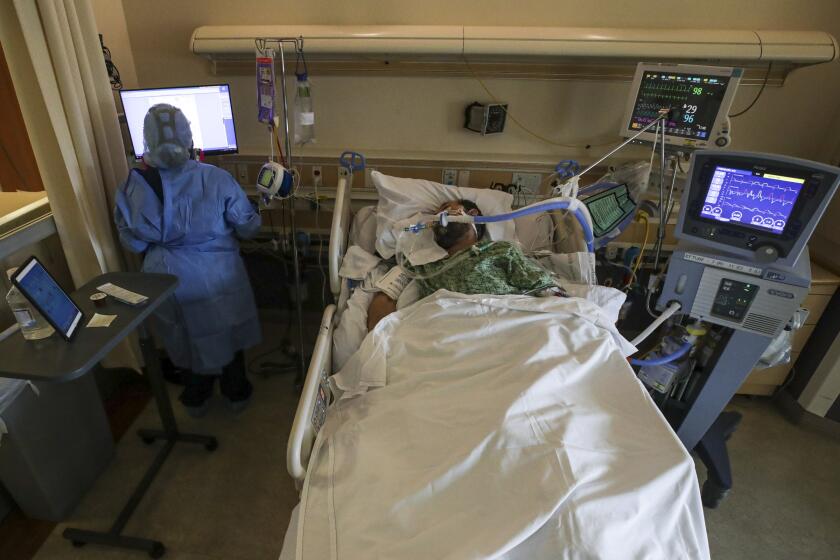Bomb-proofing buildings: new fight on terror
Since the Cold War, this expanse of high desert dunes and valleys has been a proving ground for simulated nuclear blasts, powerful ray guns and an array of destructive missiles.
But now, in an era of military downsizing and vastly diminished foreign threats, the Pentagon has presented a new challenge to the scientists who work at the 3,200-square-mile range: Develop counter-terrorism programs to save the lives of Americans here and overseas.
And why not? Nuclear-tipped missiles and weapons-grade lasers won’t stop lone terrorist bombers.
America has done little to “bomb harden” its downtowns since attacks on New York’s World Trade Center in 1993 and the Alfred P. Murrah Federal Building in Oklahoma City in 1995 beyond installing concrete planters, metal detectors and private security details at selected federal buildings and courthouses.
But that is about to change. Construction began here this month on an unassuming four-story office building. When the work is completed in April, the 80-by 60-foot structure will be blasted again and again with truck bombs, car bombs and letter bombs.
The effects of the explosives--ranging from ammonium nitrate mixtures to the pliable C-4--will be monitored by sophisticated sensors and high-speed cameras. If all goes according to plan, blowing up the $625,000 building is expected to produce a wealth of information that could help determine how to arrest structural collapses and subsequent lethal cascades of concrete, shattered glass, furniture and fixtures.
The tests grow out of a relatively new national security goal: increasing the odds that domestic travel, commerce and governmental affairs can be conducted in a safe manner. In other words, protecting urbanites from bombs is part of what it means to be a world power these days.
“Experts are predicting that the [terrorism] problem is going to get worse, not better,” said Douglas Sunshine, manager of the Defense Special Weapons Agency’s blast mitigation for structures program.
“But we are not trying to make fortresses; we are trying to make office buildings safer if a bomb goes off,” he said. “Right now, there are a lot of things we don’t fully understand about blast effects on civilian structures.
“Earthquakes, for example, move foundations. But bomb blasts cause unusual tensions on columns, and push up on floors designed to absorb downward pressure.”
And different explosives produce unique pressure pulses that also have to be taken into account.
One thing project officials do know is that hardening buildings against terrorism will be expensive. Pricey options could include wrapping columns with steel to prevent pancaking, installing heavy blinds to catch flying glass and covering critical piping and machinery with protective jackets.
Another problem, officials say, is that technology transfers from military to civilian realms can move like molasses. As a result, it could be years before the project’s data are incorporated in the design stages of new buildings, or in retrofitting existing ones.
For these reasons--and because they are potential targets--the technology will be applied first to military facilities and federal buildings, Sunshine said.
Critics of the counter-terrorism activity at White Sands say the Pentagon is overstating the threat. Instead of spending billions to build a “fortress America,” they argue for improved intelligence and stepping up efforts to protect human rights and help the poor.
William Arkin, a military expert and columnist for the Bulletin of the Atomic Scientists, suggested that the blast mitigation project is one of many spawned by military agencies seemingly in search of reasons for being, and continued funding, in the post-Cold War era.
“There is a make-work quality to these programs that seems more significant than the crucial contribution they are making to our national defense,” he said.
“If their results proliferate into the commercial sector, great,” he added. “But let’s hope they also put hurricane, tornado, fire and earthquake protection into buildings while they are thinking about it.”
Striding across the site where the experimental office building will be constructed, Navy Lt. Cmdr. Clete Helvey said it is far too early to criticize the project.
“Truth is, we don’t have hard data that shows what bomb blasts do to typical buildings,” he said. “There has been a lot of guessing about such things. We’re going to change that.”
More to Read
Start your day right
Sign up for Essential California for news, features and recommendations from the L.A. Times and beyond in your inbox six days a week.
You may occasionally receive promotional content from the Los Angeles Times.







